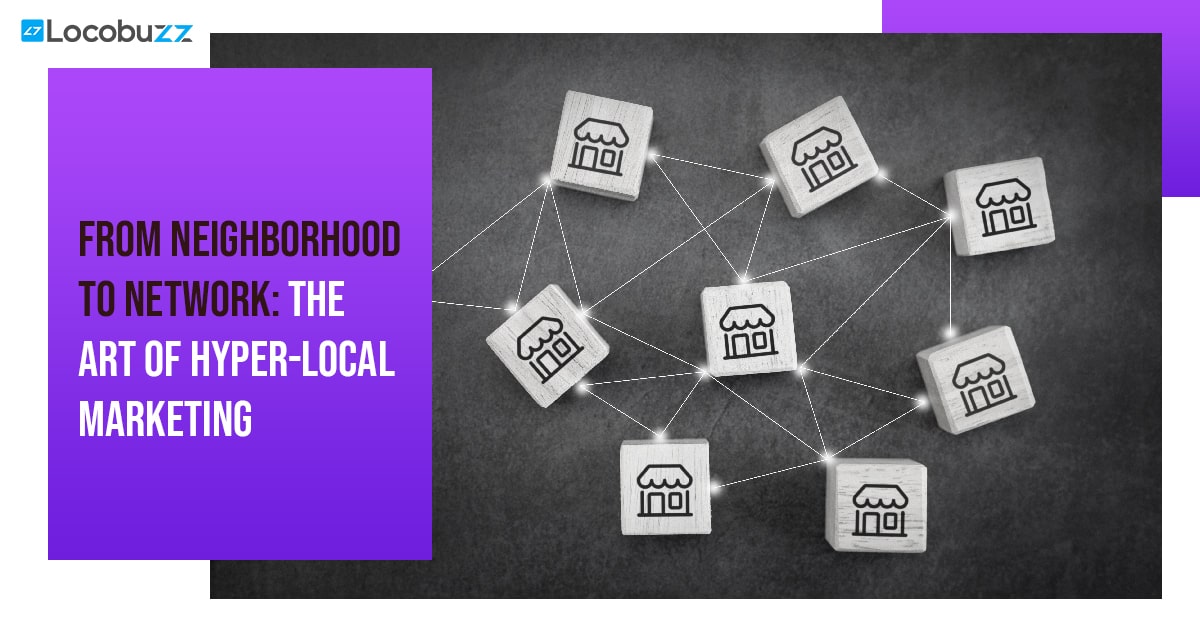The Importance of Optimizing Customer Touchpoints for Enhanced Business Growth
 In today’s competitive business landscape, understanding and optimizing customer touchpoints is critical for the success of any business. Customer touchpoints refer to the various points of interaction that customers have with a brand throughout their customer journey, from initial awareness to post-purchase follow-up. These interactions can take place through multiple channels, including social media, email, website, phone, and in-person interactions.
In today’s competitive business landscape, understanding and optimizing customer touchpoints is critical for the success of any business. Customer touchpoints refer to the various points of interaction that customers have with a brand throughout their customer journey, from initial awareness to post-purchase follow-up. These interactions can take place through multiple channels, including social media, email, website, phone, and in-person interactions.
Table of Contents
Why are customer touchpoints important for businesses?
Customer touchpoints provide businesses with valuable opportunities to engage with customers, build trust, and drive customer loyalty. By understanding customer touchpoints, businesses can identify pain points in their customer journey, optimize the customer experience, and create more personalized and relevant interactions with customers.
This article will provide a comprehensive overview of customer touchpoints, their importance for businesses, and best practices for optimizing customer touchpoints. In the following sections, we will discuss the different types of customer touchpoints, how to map and measure customer touchpoints, and how to use customer touchpoints to drive customer loyalty and retention. We will also discuss common challenges that businesses face when optimizing customer touchpoints and provide tips for overcoming these challenges.
Types of Customer Touchpoints
Customer touchpoints can be broadly categorized into three main types: physical, digital, and human touchpoints. Each type of touchpoint provides a unique opportunity for businesses to engage with their customers and create a positive customer experience.
Physical touchpoints refer to any point of contact between the customer and the physical environment of the business. Examples of physical touch points include the store or office location, product packaging, and any physical displays or signage used to promote the business. Physical touchpoints can have a significant impact on the customer’s perception of the brand and its products or services. The design and layout of a store or office, for instance, can influence the customer’s level of comfort and convenience, which in turn can affect their willingness to make a purchase or return in the future.
Digital touchpoints refer to any point of contact between the customer and the business’s digital presence, such as the website, social media, or mobile app. In today’s digital age, digital touchpoints have become increasingly important for businesses to reach and engage with their customers. These touchpoints can be used to provide customers with information about products or services, answer their questions, or offer special promotions or discounts. They can also be used to collect customer feedback and data, which can be used to improve the customer experience and inform future marketing efforts.
Human touchpoints refer to any point of contact between the customer and a representative of the business, such as customer service or sales representatives. These touchpoints can have a significant impact on the customer’s perception of the brand and their level of satisfaction with the product or service. The quality of customer service provided by a business, for instance, can greatly influence the customer’s loyalty and willingness to recommend the brand to others.
Importance of Understanding Customer Touchpoints
Understanding customer touchpoints is crucial for businesses as it allows them to identify areas where they can improve customer experience. By examining each touchpoint, businesses can see where customers may be experiencing challenges or frustration, and make necessary improvements. For example, if a customer finds it difficult to navigate a company’s website, this touchpoint may need to be redesigned to provide a better user experience.
Furthermore, understanding customer touchpoints allows businesses to personalize their interactions with customers. By analyzing how customers interact with their touchpoints, businesses can gain insights into their preferences and behavior, and tailor their communications and offerings accordingly. This can help businesses build stronger relationships with their customers, leading to increased loyalty and repeat business.
Understanding customer touchpoints helps businesses prioritize which touchpoints to invest in. Not all touchpoints are equally important to every business, and investing in the wrong touchpoints can be a waste of resources. By understanding which touchpoints are most critical to their customers, businesses can focus their efforts on those touchpoints and allocate resources accordingly. This can lead to more effective marketing campaigns, better customer experiences, and ultimately, increased revenue.
Customer Journey Mapping
What is customer journey mapping and why is it important?
How to create a customer journey map?
Creating a customer journey map typically involves the following steps:
Define your customer personas: To create an effective customer journey map, businesses need to understand their customers and their needs. This involves defining customer personas, which are fictional representations of the ideal customer that reflect the demographics, behaviors, and attitudes of your target audience.
Map the customer journey: Once you have defined your customer personas, the next step is to map out the customer journey. This involves identifying all the touchpoints that a customer has with your business, from initial awareness to post-purchase follow-up.
Analyze the touchpoints: Once you have mapped out the touchpoints, it is essential to analyze each touchpoint from the customer’s perspective. This will help you understand the customer’s emotional and behavioral response to each touchpoint and identify any pain points or areas of improvement.
Identify opportunities for improvement: Based on the analysis of each touchpoint, identify opportunities for improvement. This may include changes to the customer experience, such as streamlining the checkout process, improving customer service, or providing additional resources to help customers make informed decisions.
How Can Customer Journey Maps Be Used to Identify Touchpoints?
Customer journey maps can take various forms, but they typically include a timeline of the customer journey and a visual representation of the touchpoints. For example, a customer journey map may include a series of stages that a customer goes through, such as awareness, consideration, purchase, and post-purchase follow-up. Within each stage, there may be several touchpoints, such as a website visit, a phone call, or an email.
By creating a customer journey map, businesses can identify touch points where they need to focus their efforts. For example, if a customer journey map shows that customers are abandoning their shopping carts during the checkout process, the business may need to focus on streamlining the checkout process and improving the user experience. Alternatively, if the customer journey map shows that customers are struggling to find information about a product or service, the business may need to invest in additional resources to help customers make informed decisions.
Customer journey mapping is a valuable tool that allows businesses to gain a better understanding of their customers’ experiences and identify areas for improvement. By mapping out the customer journey, businesses can identify the various touchpoints that customers encounter along the way and analyze each touchpoint from the customer’s perspective. This can help businesses personalize their interactions with customers, prioritize which touchpoints to invest in, and ultimately improve the overall customer experience.
Strategies for Improving Customer Touchpoints
Improving customer touchpoints is critical for businesses to enhance their overall customer experience. Here are some strategies businesses can adopt to improve customer touchpoints:
Conducting customer research and feedback to identify pain points: It is essential for businesses to understand their customers’ needs and pain points to enhance their customer touchpoints. Conducting customer research and feedback can help businesses identify the areas that need improvement. For instance, businesses can send out surveys to their customers to collect feedback and use that feedback to enhance their touchpoints. By addressing pain points and improving the customer experience, businesses can retain their customers and attract new ones.
Personalizing touchpoints based on customer preferences and behavior: Personalization is an effective way to improve customer touchpoints. By personalizing touchpoints, businesses can provide a more tailored experience for their customers. For instance, if a customer frequently purchases a particular product or service, a business can send personalized recommendations or offers related to that product or service. Personalization can improve customer satisfaction and loyalty.
Consistency across all touchpoints: Consistency is critical in providing an excellent customer experience. Businesses should ensure that their touchpoints are consistent across all channels. For instance, the tone of voice and branding should be consistent on the website, social media, and other touchpoints. Consistency can help build trust with customers and create a seamless customer experience.
Investing in technology to improve digital touchpoints: Digital touchpoints, such as a website or mobile app, are crucial in today’s digital world. Businesses should invest in technology to improve their digital touchpoints. For instance, a website should be user-friendly, easy to navigate, and have a quick loading speed. Investing in technology can enhance the customer experience and improve customer satisfaction.
Providing comprehensive training to employees for human touchpoints: Human touchpoints, such as customer service or sales representatives, can make a significant impact on the customer experience. Businesses should provide comprehensive training to their employees to ensure they have the necessary skills to provide excellent customer service. By investing in employee training, businesses can improve their human touchpoints and create a positive customer experience.
Businesses can improve their customer touchpoints by conducting customer research and feedback, personalizing touchpoints, maintaining consistency, investing in technology, and providing comprehensive training to employees. Improving customer touchpoints can lead to higher customer satisfaction, retention, and revenue growth.
Loocbuzz CX Suite can help you effectively manage customer touchpoints:
Loocbuzz CX Suite is designed to provide a holistic approach to managing customer touchpoints throughout their journey with your brand. From initial awareness to post-purchase follow-up, Loocbuzz CX Suite enables you to track and optimize every touchpoint to enhance the overall customer experience. With its advanced analytics and reporting capabilities,
Loocbuzz CX Suite allows you to identify areas for improvement and implement data-driven strategies to ensure customer satisfaction and loyalty.
Mapping the Customer Journey: Loocbuzz CX Suite enables you to map out every step of the customer journey, including all touchpoints and interactions with your brand. This allows you to gain a complete understanding of the customer experience and identify areas for improvement.
Here’s some additional info on how Loocbuzz CX Suite can help you effectively manage customer touchpoints:
Managing Multiple Channels: With customers interacting with brands through multiple channels, including social media, email, chatbots, and phone, it can be challenging to manage and optimize every touchpoint. Loocbuzz CX Suite streamlines the process by providing a unified platform to manage customer interactions across all channels.
Personalizing Customer Interactions: Personalization is key to enhancing the customer experience, and Loocbuzz CX Suite helps you achieve this by providing a complete view of each customer’s preferences, behaviors, and interactions with your brand. This allows you to tailor each touchpoint to the individual customer, improving their overall experience.
Analyzing Customer Feedback: Loocbuzz CX Suite allows you to collect and analyze customer feedback across all touchpoints, providing valuable insights into customer sentiment and satisfaction. This helps you identify areas for improvement and implement data-driven strategies to enhance the overall customer experience.
In summary, Loocbuzz CX Suite is a powerful tool for managing customer touchpoints throughout the customer journey. By providing a unified platform for managing interactions across multiple channels, personalizing customer interactions, and analyzing customer feedback, Loocbuzz CX Suite enables you to optimize every touchpoint and enhance the overall customer experience.
Conclusion
In conclusion, customer touchpoints are crucial for businesses in today’s competitive landscape. Businesses need to understand and optimize customer touchpoints to create a positive customer experience and drive customer loyalty. Customer touchpoints can be categorized into physical, digital, and human touchpoints, and each type of touchpoint provides a unique opportunity to engage with customers.
Understanding customer touchpoints helps businesses identify areas of improvement, personalize interactions with customers, and prioritize which touchpoints to invest in. Customer journey mapping is a process that can help businesses gain a better understanding of their customers’ experiences and create more effective marketing campaigns. By optimizing customer touchpoints, businesses can improve the overall customer experience, increase revenue, and gain a competitive advantage in their industry.






















